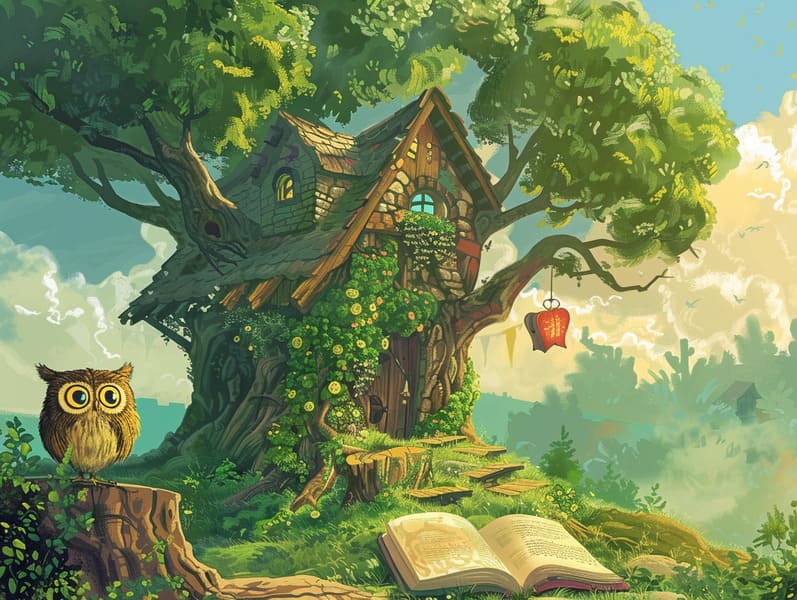The Creation of Popular Fairy Tales with the Endless Wonder.
The Creation of Popular Fairy Tales with the Endless Wonder.
Blog Article

Short fairy tales have timeless appeal. These stories have been recounted from one generation to the next ages before they were ever put on paper. They arose from a variety of backgrounds, including Middle Eastern traditions. They were initially shared among grown-ups, often carrying themes and messages aligned with the societal norms and beliefs of the time.
The famous Grimm duo, Jacob and Wilhelm Grimm, were among the first to gather and publish many of these beloved tales. Their volume, "Grimm's Story Collection," included stories like "Cinder Maid," "Little Brother and Little Sister," and "Schneewittchen," which have since become essentials in the world of traditional fairy tales. Similarly, Andersen's charming fairy tales, such as "The Mermaid," and "The Duckling that Could," have enchanted hearts worldwide, securing their place in the pantheon of timeless fairy tales.
Despite being ancient, these stories remain as significant as ever, especially as children's bedtime stories. These delightful tales are now available in diverse formats, including artistically illustrated books, charming animations, and free fairy tales online.
Their persistent charm can be linked to several delightful features:
Moral Lessons: Traditional fairy tales often convey important moral lessons. Narratives like "The Boy Who Cried Wolf" teach the significance of being truthful, while "The Story of the Tortoise and the Hare" demonstrate the virtues of determination and unpretentiousness. These tales offer kids clear distinctions between truth and falsehood, forming their moral compass in a soft yet meaningful way.
Empathy and Understanding: Timeless fairy tales frequently portray personalities facing challenges and problems, inciting listeners to sympathize with their struggles and applaud their triumphs. For instance, "The Tale of Beauty and the Beast" illustrates the significance of looking beyond appearances to understand the real character of a character, building understanding and knowledge.
Cultural Awareness: Many fairy tales are infused with the cultural contexts from which they originated. Understanding these stories can provide illuminating insights into different historical contexts, nurturing a sense of global understanding and acknowledgment.
Creativity and Imagination: The enchanted elements in fairy tales—enchanted lands—boost children’s creative thoughts. These narratives guide readers to otherworldly realms, enlivening inventive dreams and a sense of amazement that endures a lifetime.
Classic fairy tales are not only spellbinding but also teaching. They work as delightful tools in promoting various cognitive and emotional skills in kids. When ancient fairy tales are spoken out loud, they enhance communication skills by teaching new phrases and complicated sentence structures. This practice also develops hearing abilities and concentration, as kids stay focused, keen to see what happens next.
Furthermore, conversing about the themes and characters of ancient fairy tales can improve thought processes and reasoning skills. Young readers are taught to identify patterns, forecast, and get cause and effect. These deliberations also encourage the young communicate their thoughts and feelings, enhancing their emotional intelligence.
In today’s digital era, the abundance of digital storybooks has made these narratives more reachable than ever. Digital sites and web apps give wide arrays of ancient fairy tales that can be browsed or played anytime, anywhere. Fairy tales read out loud are particularly in demand, providing an fun way for little ones to enjoy these bewitching tales. Sound books and read-to-me stories bring characters and settings to life, often supplemented by fantastical musical scores and harmonies that elevate the narrative journey.
The timeless fascination of traditional fairy tales lies in their ability to shift to the present while maintaining their fundamental ideas. Contemporary takes of these stories often bring in more diverse protagonists and modern settings, making them pertinent to today’s audience. However, the basic principles of fortitude, generosity, and lawfulness remain unchanged, continuing to strike a chord with young listeners of all ages.
Old fairy tales also offer website a sense of serenity and comprehensibility. They bequeath a structured narrative with a unmistakable beginning, middle, and end, often drawing to a close with the conclusion of conflicts and the triumph of morality over wickedness. This dependability can be encouraging for the young, affording a sense of solidity in an fluid world.
Classic fairy tales continue to spellbind and enlighten new generations, maintaining their loveliness and importance in modern society. As kids' bedtime tales, they grant access to a perfect blend of charm and understanding, enriching moral values, empathy, and creativity. The abundance of online storybooks and the likability of fairy tales read out loud confirm that these timeless stories remain accessible to new generations.
By perpetuating and making known these stories, we continue to honor the rich tapestry of inventiveness and cultural heritage. Whether you are delving into a colorful picture book, discovering a virtual library, or listening on an read-aloud book, the elegance of Grimm's fairy tales is always within reach. These stories highlight of the unfading force of narratives and its ability to bring us together across time and space.
No matter if you are enjoying a beautifully illustrated book, experiencing a digital collection, or hearing an audiobook, the enchantment of Grimm's fairy tales is always within reach.
These fairy tales show us of the continued nature of storytelling and its ability to tie us across generations and cultures, forging a link that delights and instructs alike.